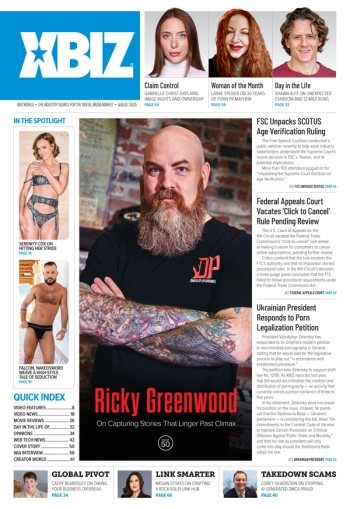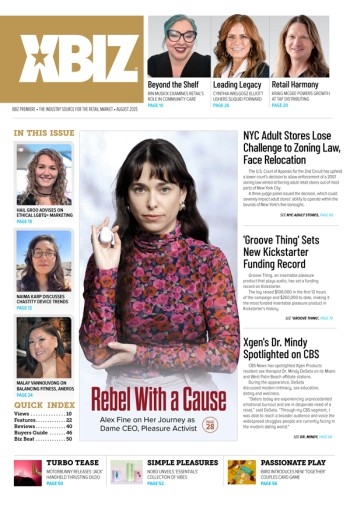Whether it’s casual dating, feminist porn or the “Fifty Shades” effect, there’s no doubt that women are more open about their sex lives than they were 10 years ago. The availability of adult content and discussions about its usage brought about by the Internet have no doubt played a role in the growth of the culture of openness when it comes to women and sex. And yet, there is still stigma attached. So even though they’re using it, why are women still reluctant to admit they have a direct relationship with adult content and how does that impact service providers?
Women are talking more about sex and online adult services than ever before; you only have to pick up a glossy magazine to read a debate about whether or not Miley Cyrus staking a claim over her own sexuality is a good thing, or asking if hook-up apps like Tinder and F-buddy demonstrate a dangerous throw-away attitude to sex or if they’re empowering. The growing acceptability of online dating has absolutely played its part in the increased usage of adult dating services; women are more engaged with the adult world than ever before. On the WhiteLabelDating.com network, we’ve seen 63 percent rise in the number of women signing up to casual dating sites in the last year. In the U.S. alone, we’ve seen staggering growth of plus - 1,603 percent.
It's difficult to picture a future for the adult industry that doesn’t include mobile. Over the last two years, a number of casual dating apps and mobile sites have flooded the market and seen staggering adoption.
The research is clear: Of 400 million Internet searches, 55 million proved to be searches for some kind of erotic content. Of those searches, we can assume that a third were being made by women if research is correct. Where has the demand come from?
It’s difficult to picture a future for the adult industry that doesn’t include mobile. Over the last two years, a number of casual dating apps and mobile sites have flooded the market and seen staggering adoption. Apps like Tinder, which sit very much in the mainstream in terms of both reputation and usage, are commonly acknowledged as existing largely to connect people for casual sex. In the U.S., a study showed that 80 percent of daters preferred using mobile dating apps over online dating, 60 percent said using one made it more likely they’d hook up and have sex.
It’s widely documented that there’s a positive correlation between the enhanced pri- vacy options offered from mobile and more frequently accessed adult content. If they’re smart, mobile can offer women an opportunity to access adult services without anyone ever finding out. These enhanced privacy options have no doubt had a positive influence on female engagement with adult services. We first saw this pattern with the “Fifty Shades” effect, which saw women viewing erotic content anytime, anywhere, and most importantly, anonymously via their Kindles. The same pattern follows suit for hook-up sites and can also be used to explain the growth in usage of affairs sites.
So while the added confidentiality mobile brings can explain the increased usage of adult content, it doesn’t explain why people accessing it want to conceal their usage of it. Which poses the question why, when so many people are using it, do consumers still want to hide their relationship with the adult world?
Feminist porn is more popular than ever before; it has its own awards ceremony, its own content sites, its own networks and even an academic journal. However, whether using adult services is an empowering feminist behavior or a degrading one is a hotly contested subject. Between U.K. campaigns against socalled “lads mags” to inconsistent arguments in the press covering everything from having multiple sexual partners as a feminist act, to “slut-shaming,” it’s hardly surprising that women find it difficult to know where to position themselves, simultaneously wanting to take charge of their sexuality without being branded a slut. We’re at a pivotal moment in adult industry history; apps like Tinder becoming a mainstream success set the precedent for a turning point. In years to come, as we need to find new ways to advertise adult content; when we get it right, we can expect the number of women using adult services to reach a whole new level.
Currently in the U.K., we know that 30 percent of women regularly access sexually explicit material — and that’s just the people who admit to it. What’s more, in Sweden where sexual culture is more open, research revealed that women aged 35-49 years had significantly more experience of pornography and cybersex than men of the same age. This demonstrates female demand is there. Furthermore, the authors of the study argued that rather than oppressing women, the anonymity offered by online pornography could mean that women using it were actually more comfortable expressing and exploring their sexuality, freed from the restrictions and attitudes of wider society. In which case, perhaps this research is symptomatic of wider potential for adult service providers that’s currently not maximised to its full advantage.
Advertisers are already becoming more savvy at creating female-focused adult content, creating softer, more targeted ads to attract women to their sites. But current efforts are not enough.
Research leads us to believe that one in three adults browsing a porn site will be a woman. When was the last time you saw an ad on a tube site that a woman would click? It could be argued that advertisers no longer have the luxury of not incorporating adverts that target women into account.
Whatever your business, if you rely on organic search for the majority of your female traffic, you’ll already know about the diminishing mass of traffic available. Particularly if you’re in the content business, why would you miss out on targeting a third of your traffic? Advertisers and publishers need to become more creative in their approach if they want to maximise opportunities for female traffic.
If dating is your business, you need women to sign up to your sites to provide both a rich user experience and to attract men, or other women, depending on your targeting. At the moment, you probably feel the need to offer women an incentive to engage with your adult product. If you take the nightclub owners view of “attract women and the men will follow,” it will be interesting to see if the evolution of the market brings about a role reversal. We receive more success stories and testimonials from women on casual dating sites now than we have ever done, with a number of female users finding not just sex, but actual relationships with someone who is their sexual equal. This is proof that women are signing up to adult dating services because they want to find a definite solution.
All the signs are telling us that you should have confidence; women already have a predisposition to use your product. As the relationship between women and adult continues to evolve, it’s time to start considering the greater impact for your business and to utilize it.
It’s clear that the female demand for adult services is there; as casual dating grows in acceptability, we can expect to see better quality, more expansive advertising campaigns and an ever greater growth in the number of female users.
Lauren Barnes is head of WhiteLabelDating.com, the award-winning dating platform powering niche dating sites for brands and individuals worldwide. Barnes heads up the company’s account management team, as well as nurturing the strategic direction of the WhiteLabelDating.com platform. Barnes manages multimillion-pound dating portfolios across multiple international territories.





